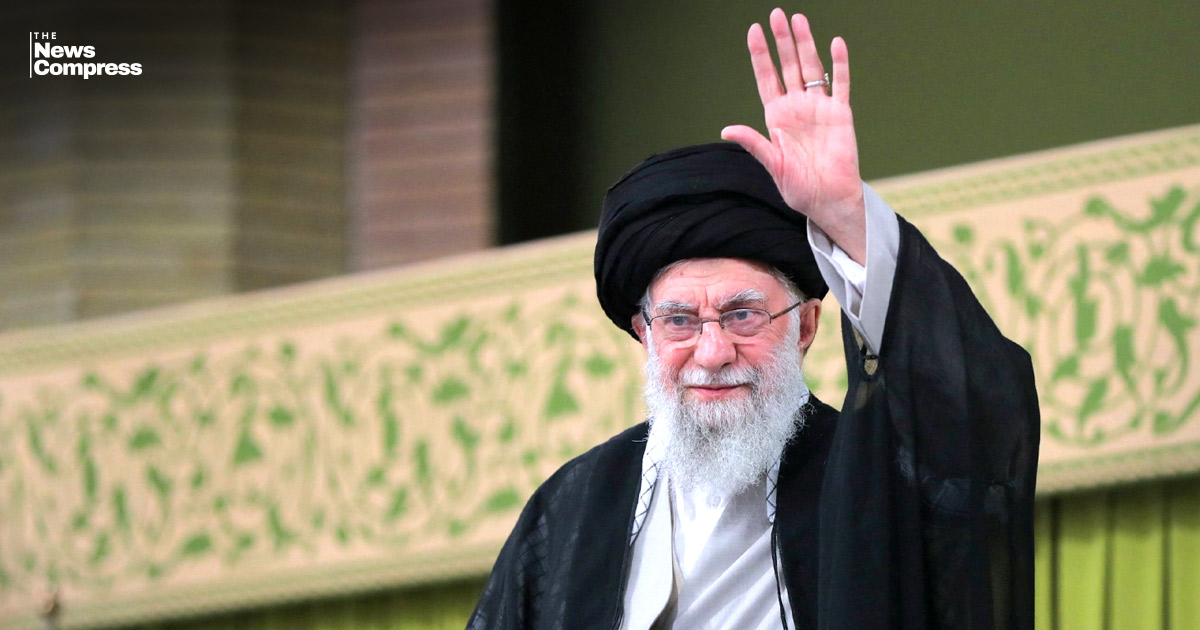Published: July 6, 2025, 01:30 PM

Image: Reuters
For the first time since Iran’s violent conflict with Israel and the United States began on June 13, Supreme Leader Ayatollah Ali Khamenei appeared in public on Saturday, marking a symbolic return that underscores both defiance and fragility.
In video footage aired by Iranian state media and shared on X, Khamenei was seen waving to a large crowd of worshippers clad in black on the eve of Ashura, a significant day of mourning for Shia Muslims. The event took place at a mosque in Tehran and was Khamenei’s first public appearance in several weeks.
During the intense 12-day war, Khamenei was reportedly sheltering in a bunker, with limited contact with the outside world. The conflict began with Israeli strikes on Iran’s key nuclear and military sites and escalated when the U.S., under President Donald Trump, joined in, bombing three major Iranian nuclear facilities. A ceasefire was declared after the U.S. strikes.
The absence of Khamenei from the public eye led to widespread speculation about his health, leadership, and Iran’s internal stability. Israeli and U.S. leaders openly discussed the possibility of removing him from power. Trump reportedly called Khamenei an “easy target,” while Israeli Prime Minister Benjamin Netanyahu hinted that eliminating him might end the war rather than escalate it.
Following the ceasefire, Khamenei released a recorded statement from an undisclosed location, claiming victory over both Israel and the U.S. and responding directly to Trump’s call for Iran’s “unconditional surrender.”
“This is not about our nuclear program,” Khamenei said. “This is about Iran surrendering... In his statement, Trump revealed the truth. The Americans have had a fundamental issue with Islamic Iran since our revolution - and it will never happen.”
Despite this public stance of resistance, analysts say Khamenei’s credibility within Iran has taken a hit. The initial Israeli strikes dealt a severe blow to Iran’s military leadership, and the perception of vulnerability has shaken public confidence. “The Islamic Republic had one social contract with society — no freedoms in exchange for security,” said Ali Vaez of the International Crisis Group. “That image has now been shattered.”
Khamenei’s reappearance came a day after President Trump warned that the U.S. “won’t allow” Iran to restart its nuclear program, signaling that tensions remain unresolved. Speaking aboard Air Force One, Trump said he would meet with Netanyahu to discuss the recent strikes and Israel’s demand to maintain “aerial superiority” over Iran to prevent it from rebuilding its missile and nuclear capabilities.
Despite claiming that Iran is open to negotiations, Iranian officials continue to deny any interest in direct talks with the U.S.
Meanwhile, reports suggest the Trump administration is exploring potential diplomatic incentives — including unlocking billions in frozen Iranian funds and allowing limited civilian nuclear development — to bring Tehran back to the negotiating table.
Whether Khamenei’s public appearance will restore confidence or merely project strength in the face of vulnerability remains to be seen.